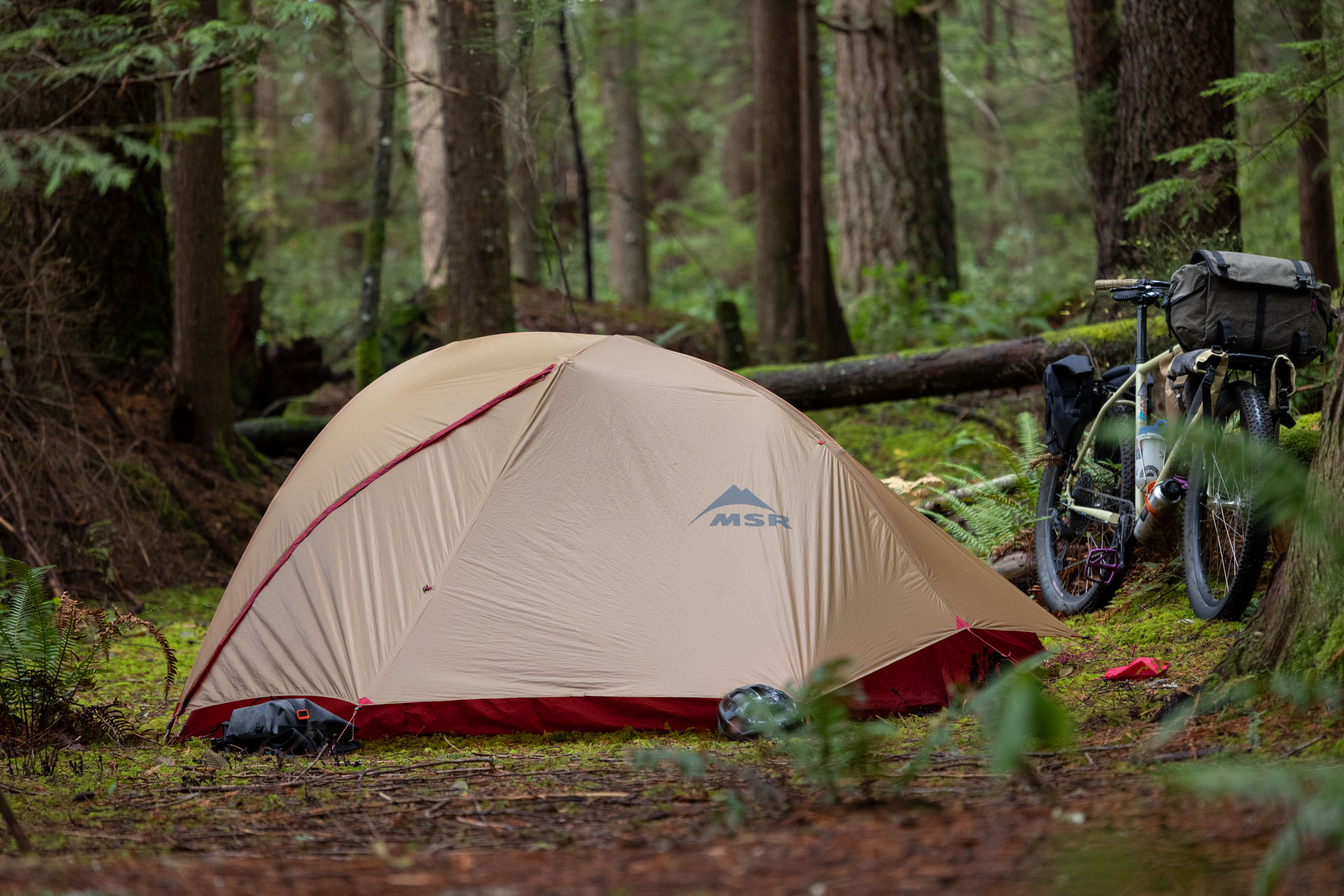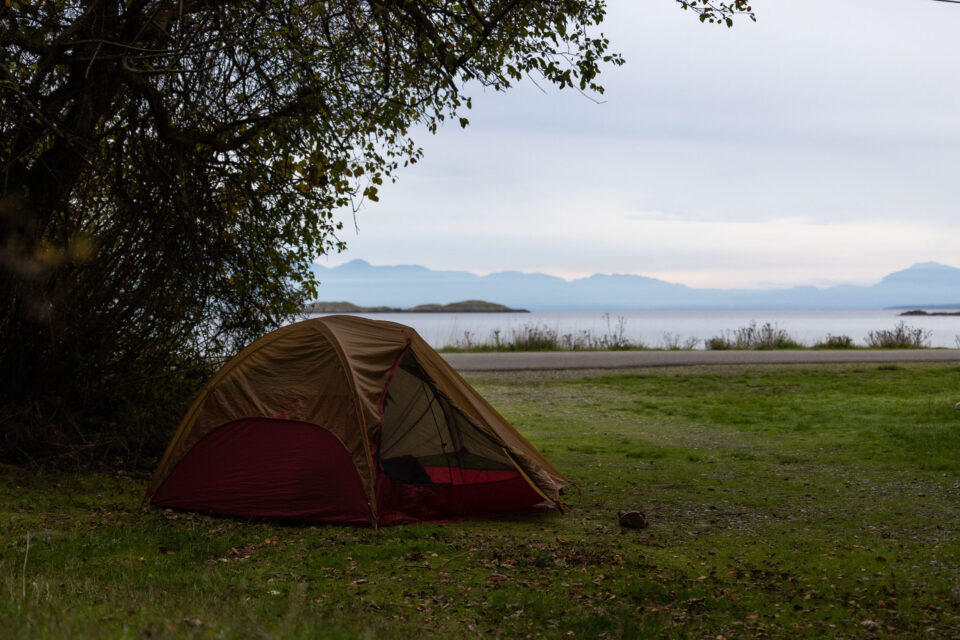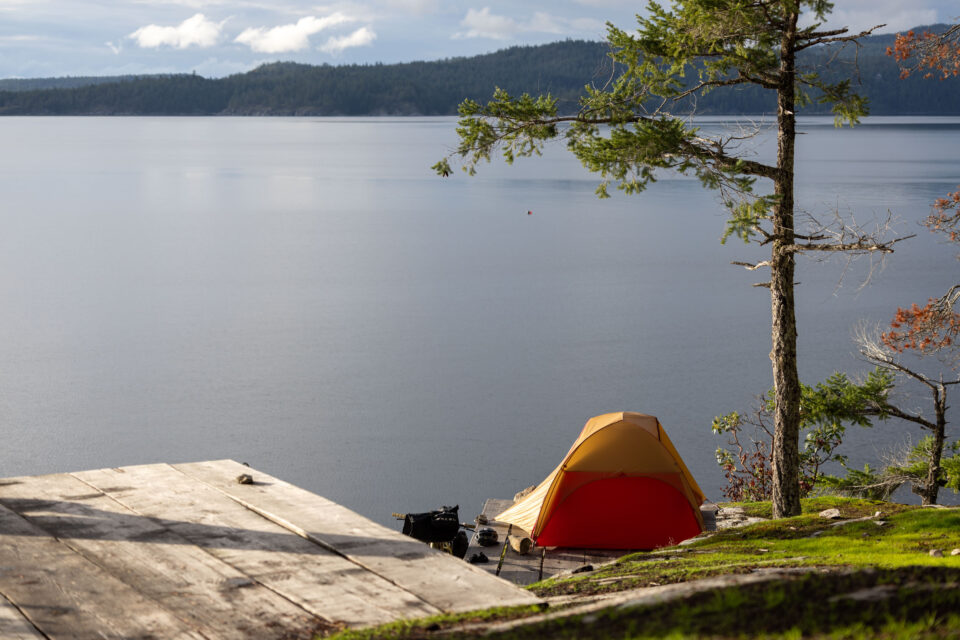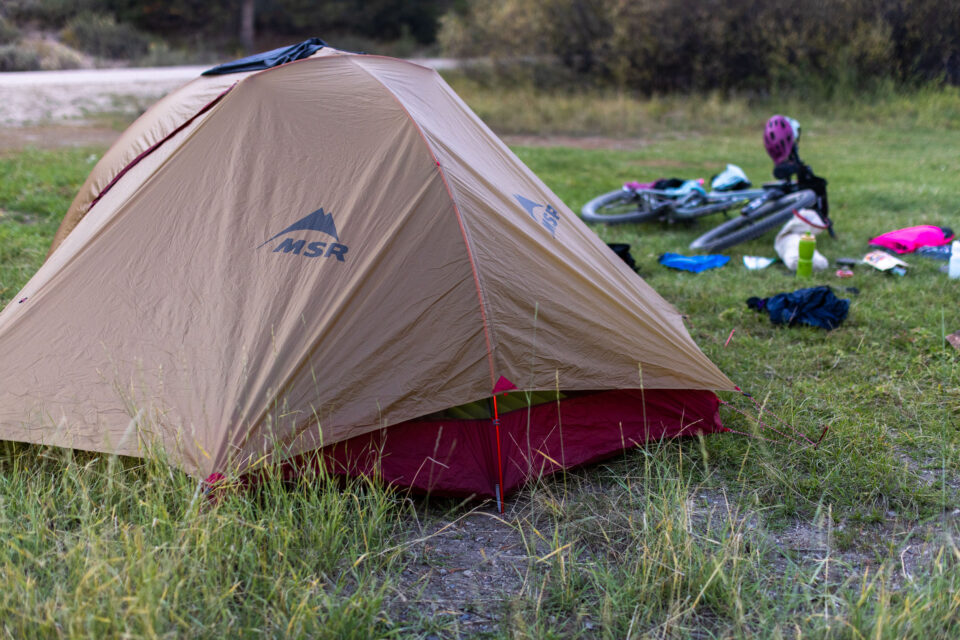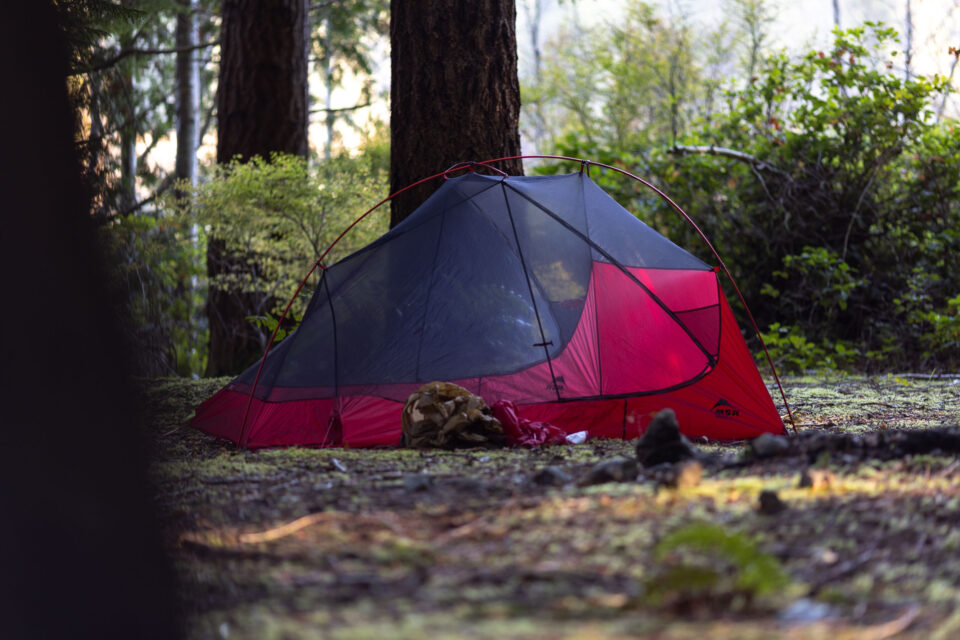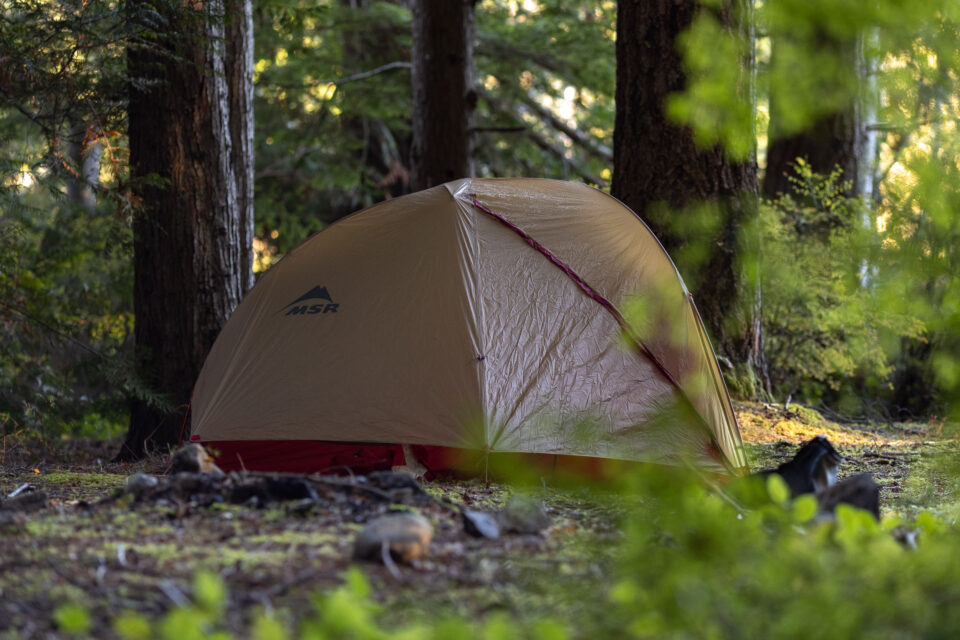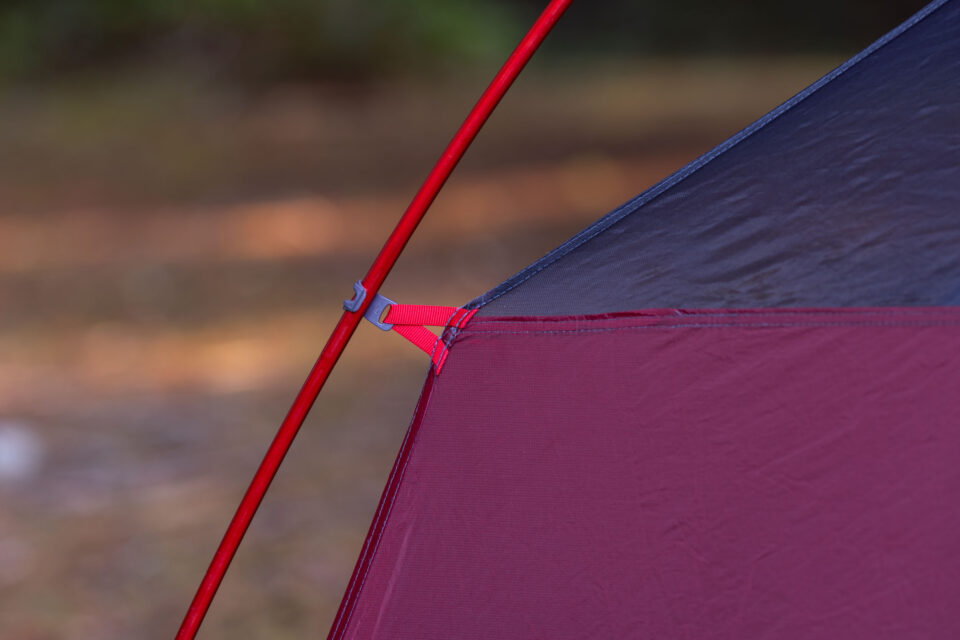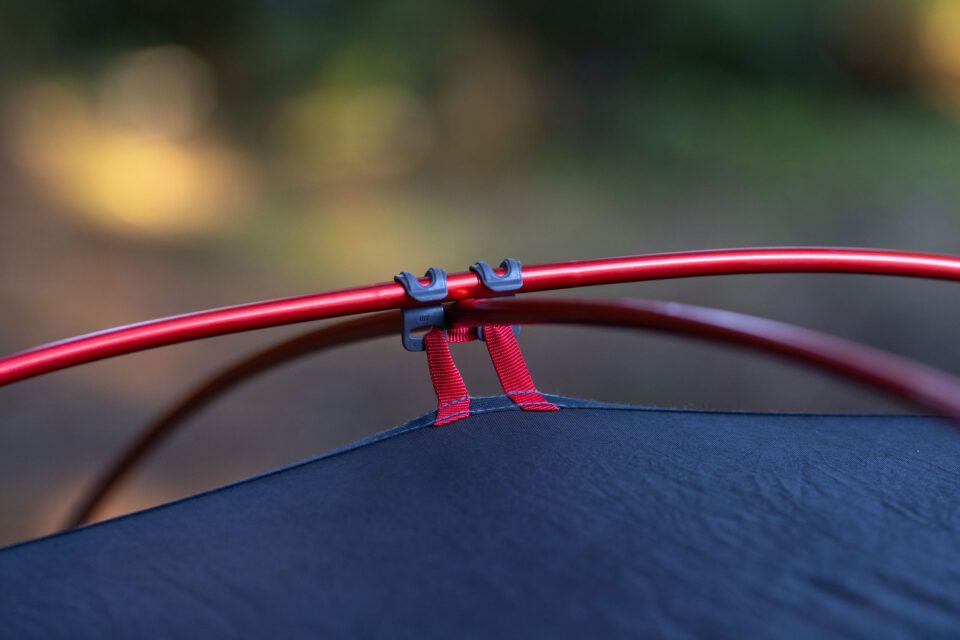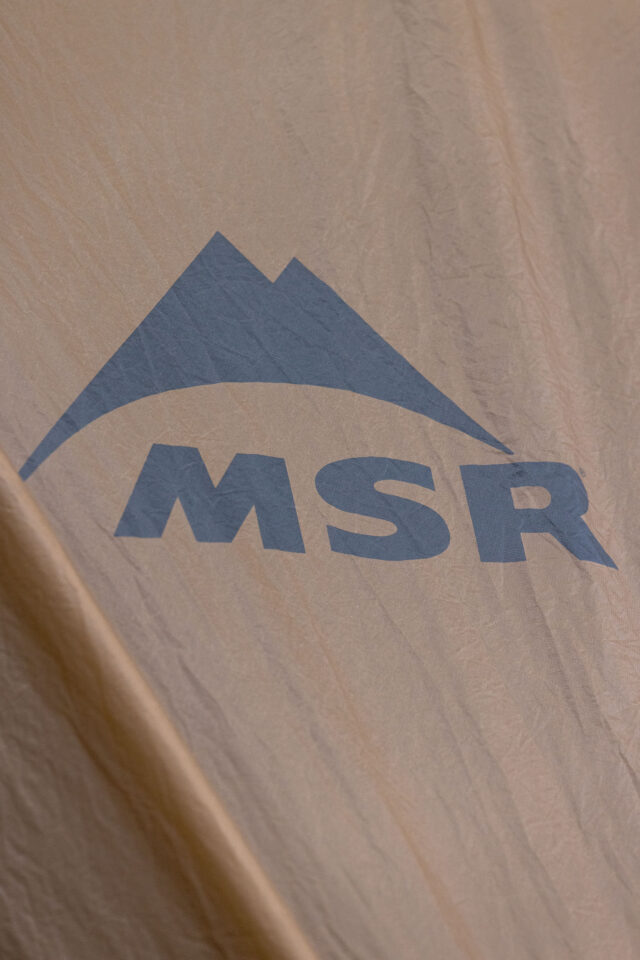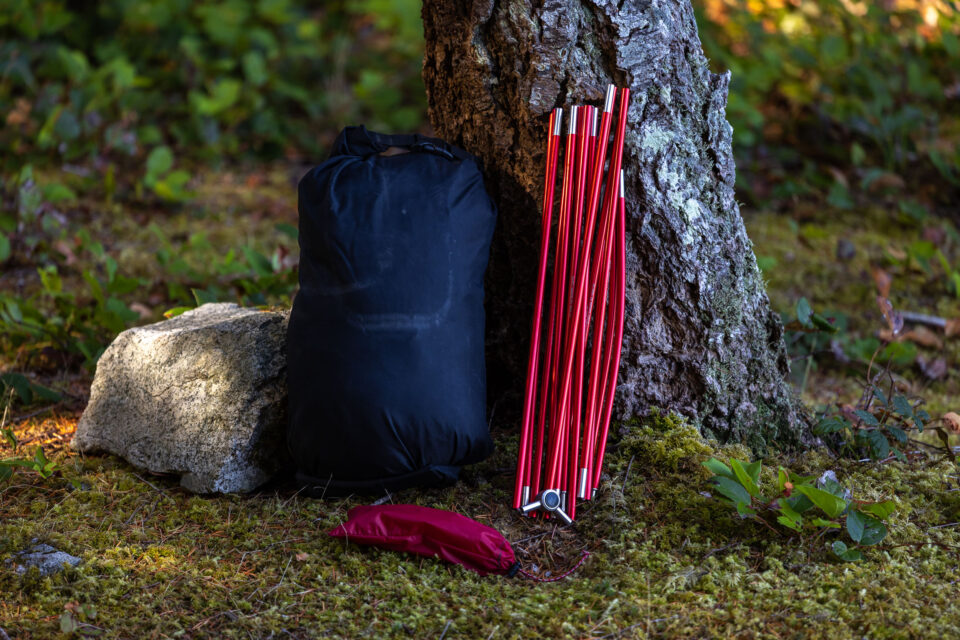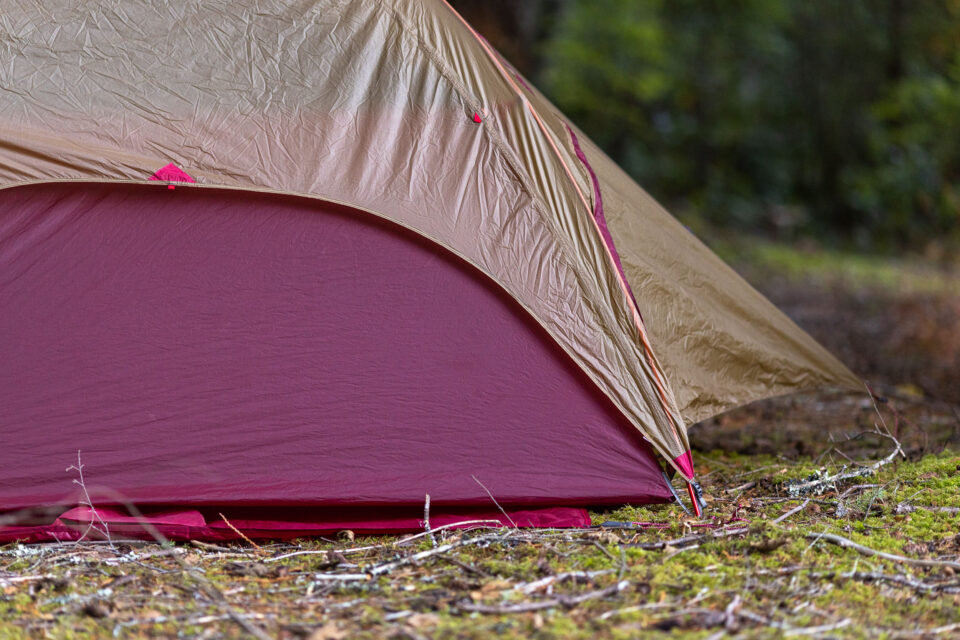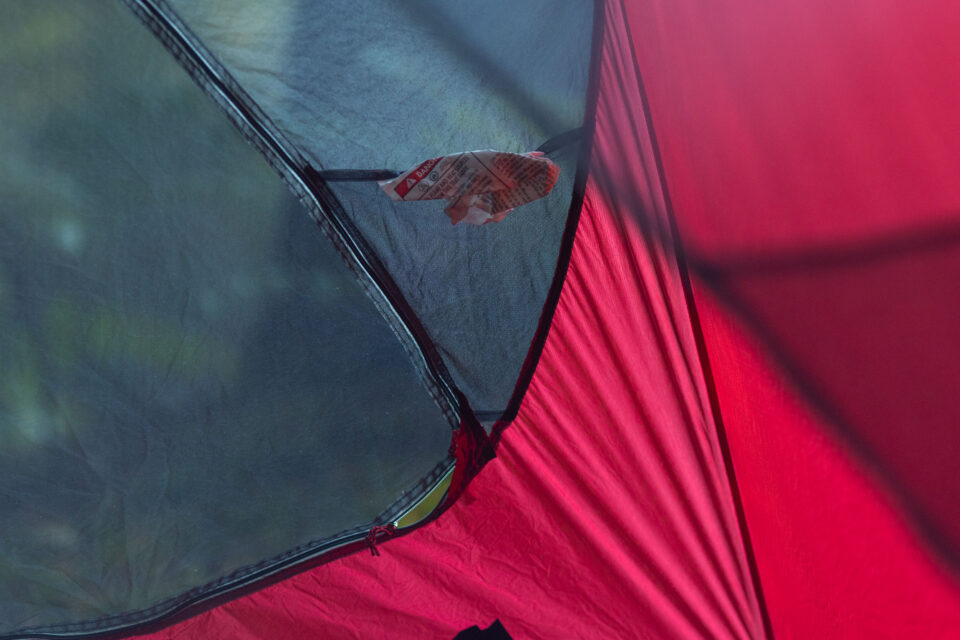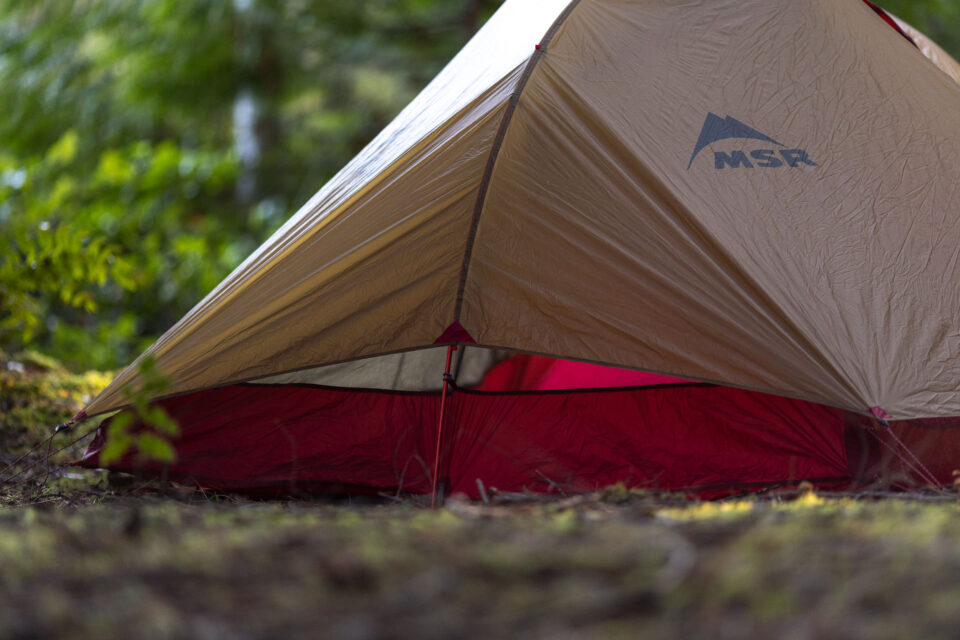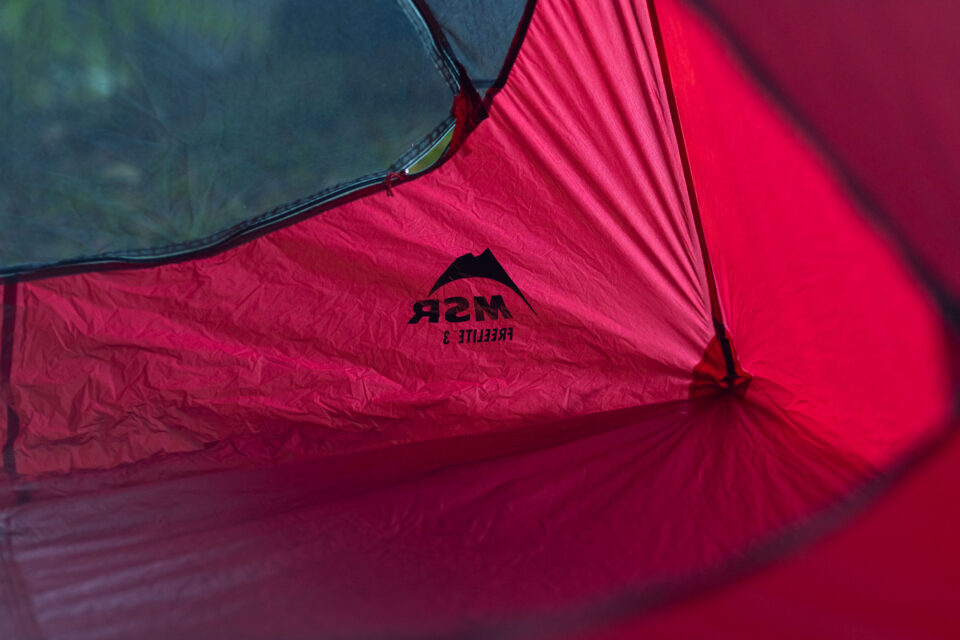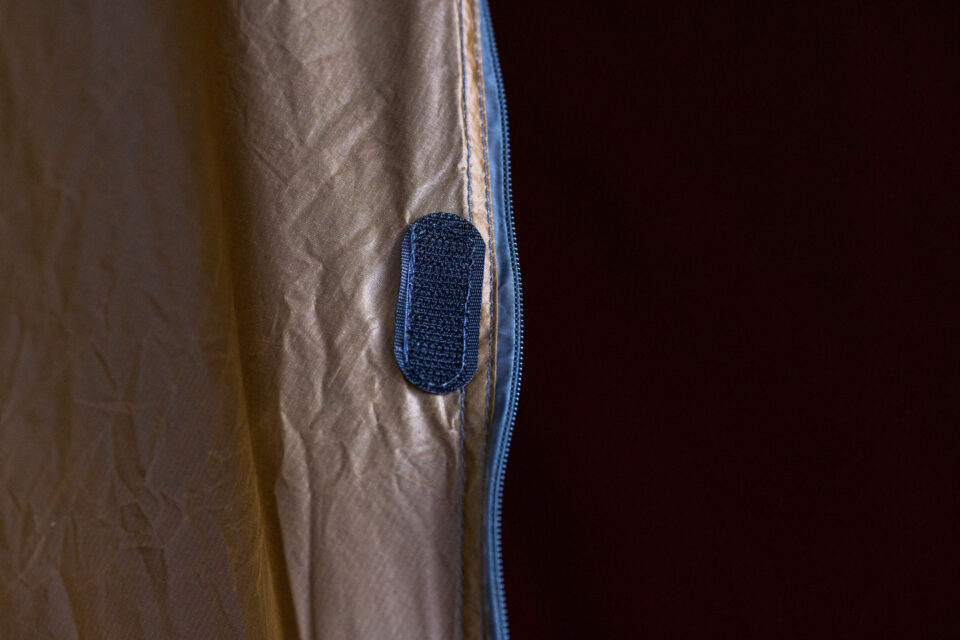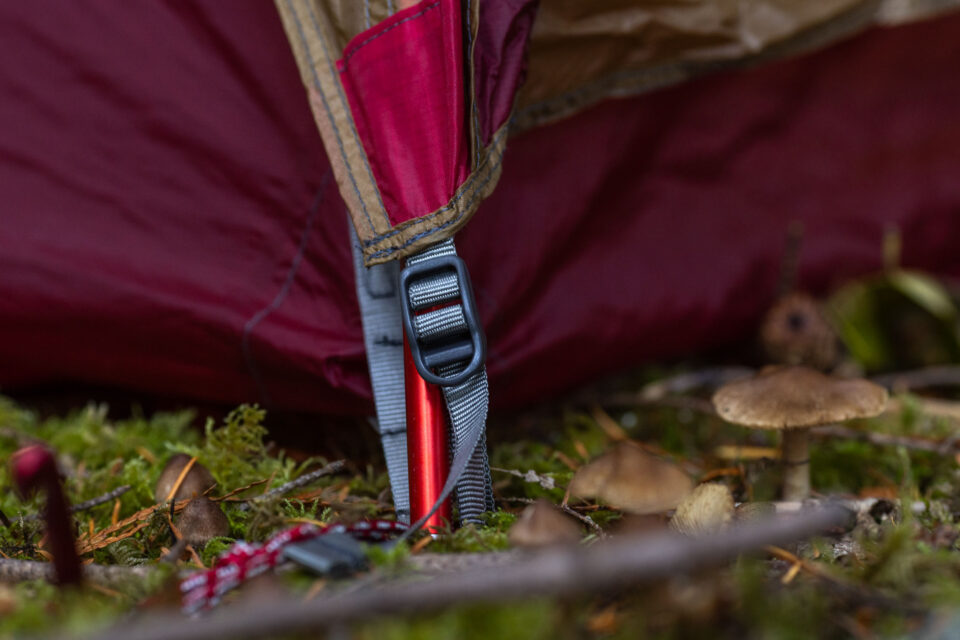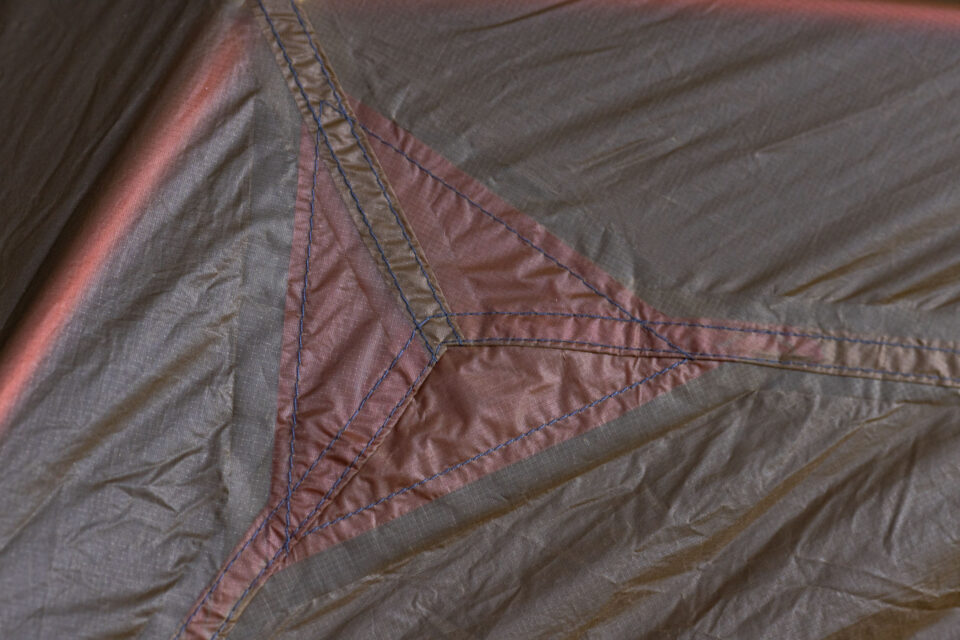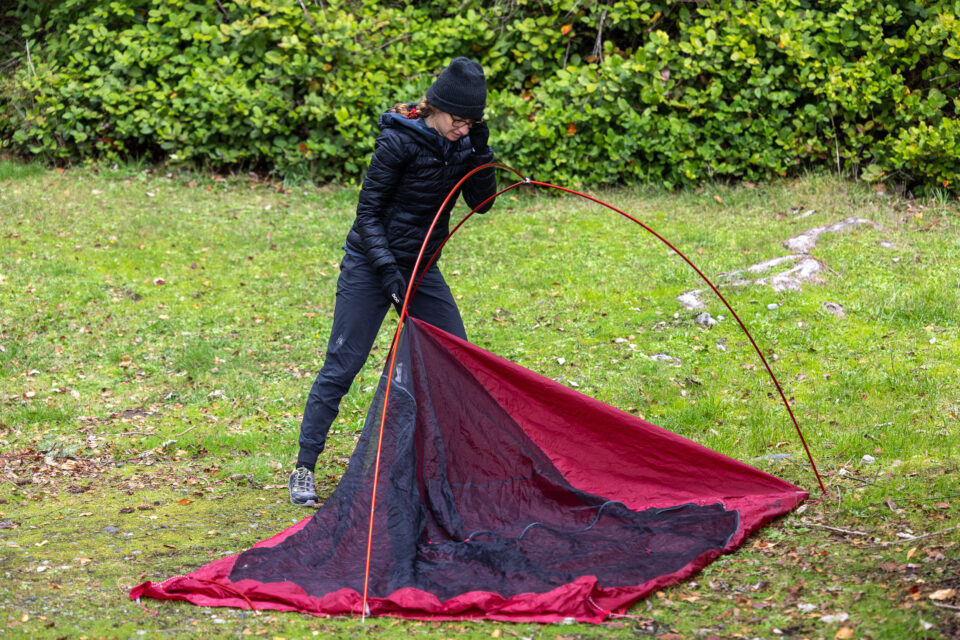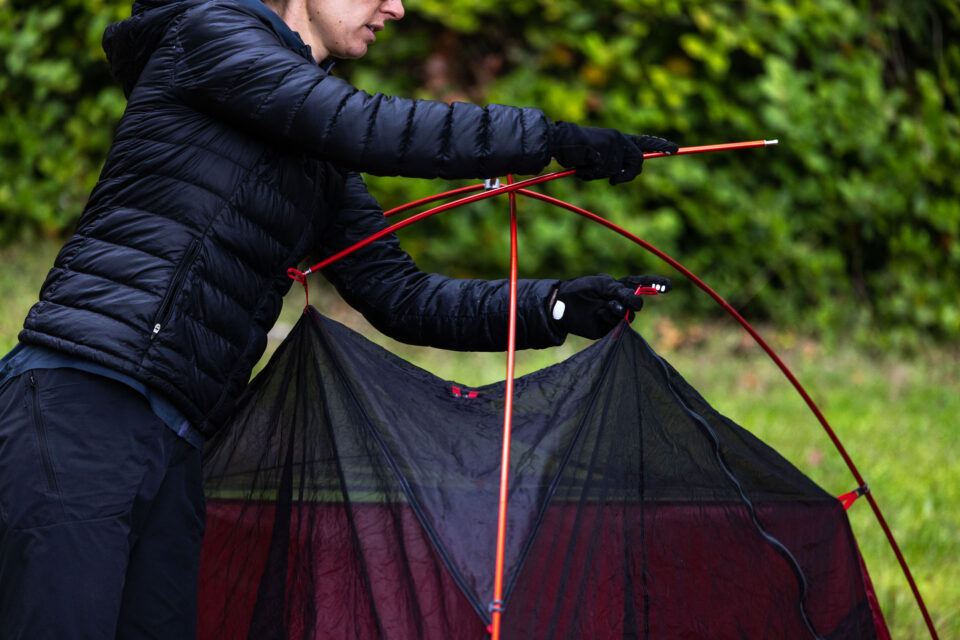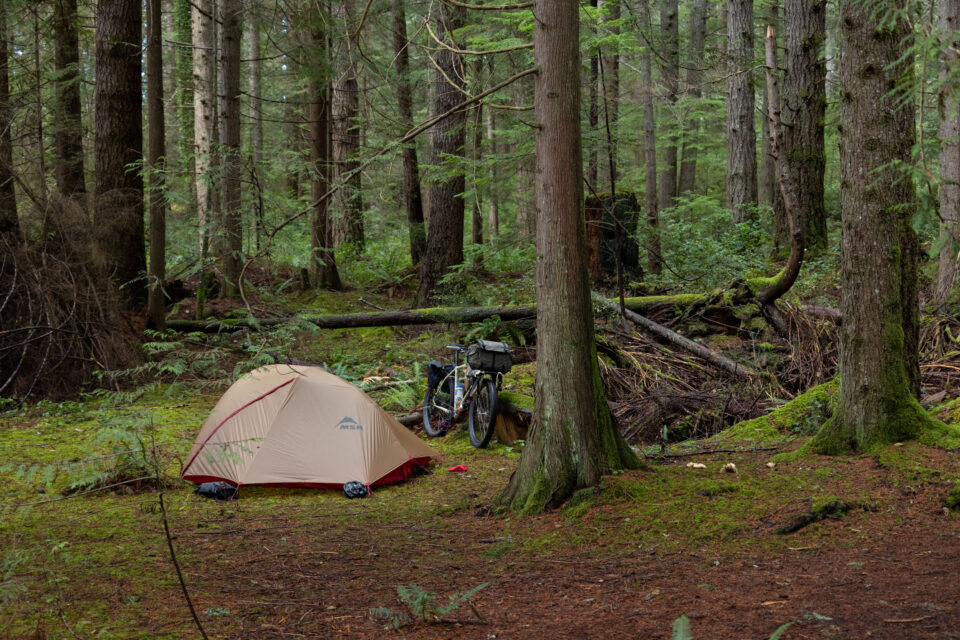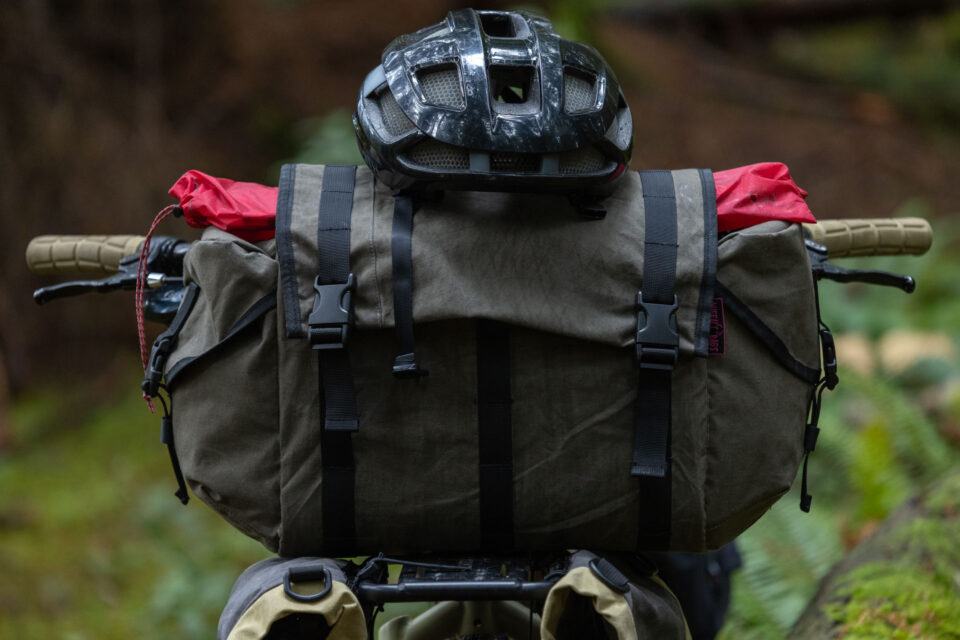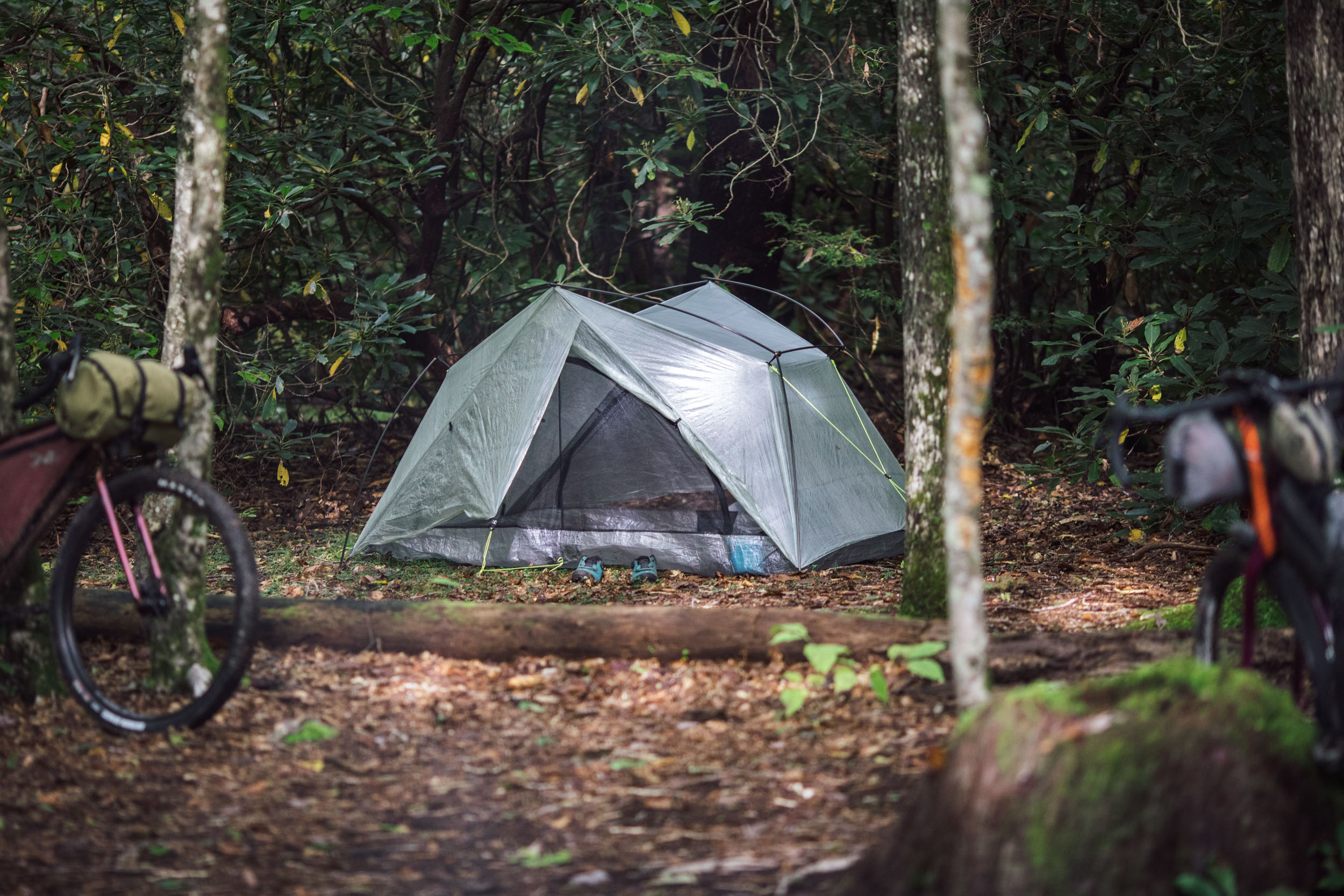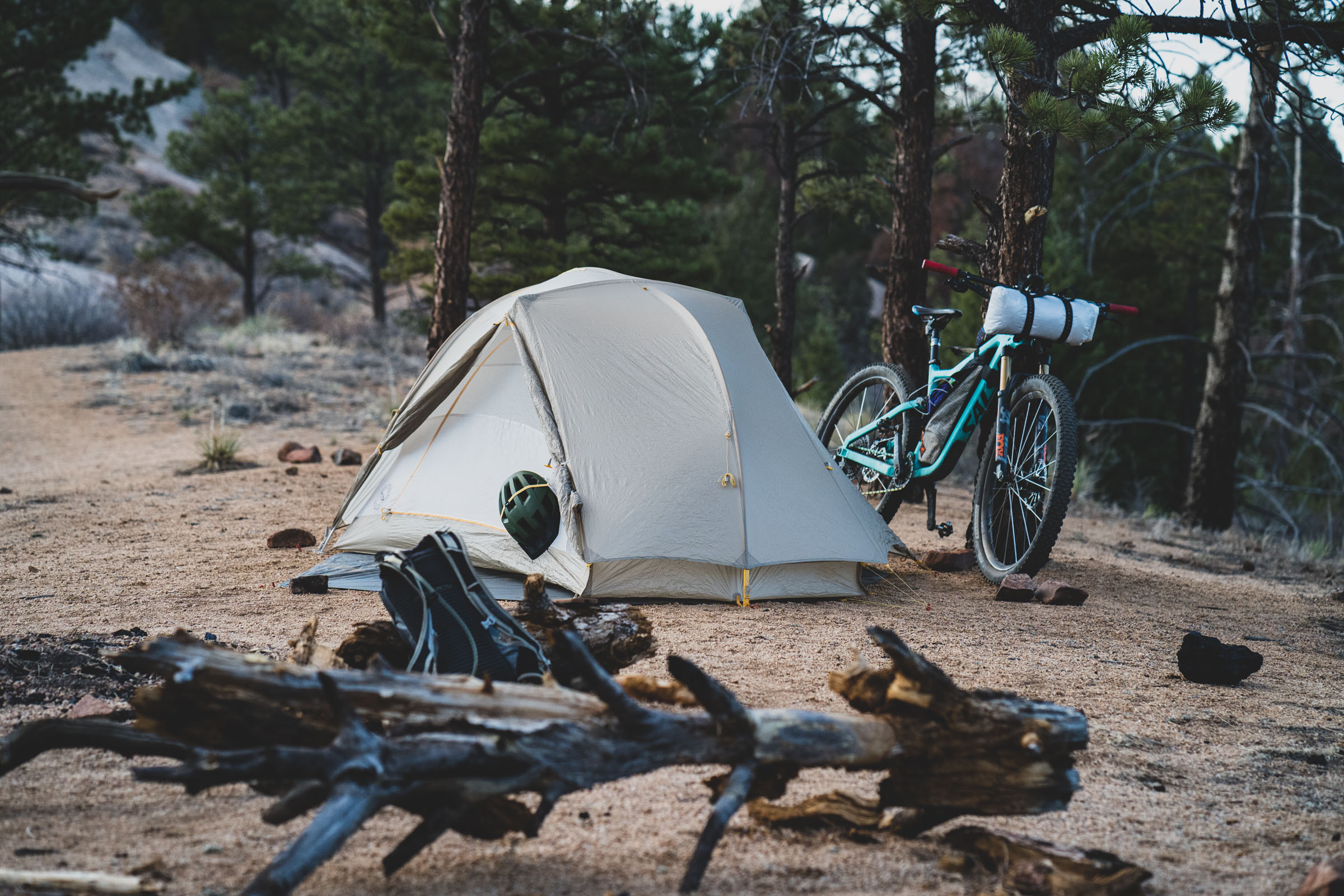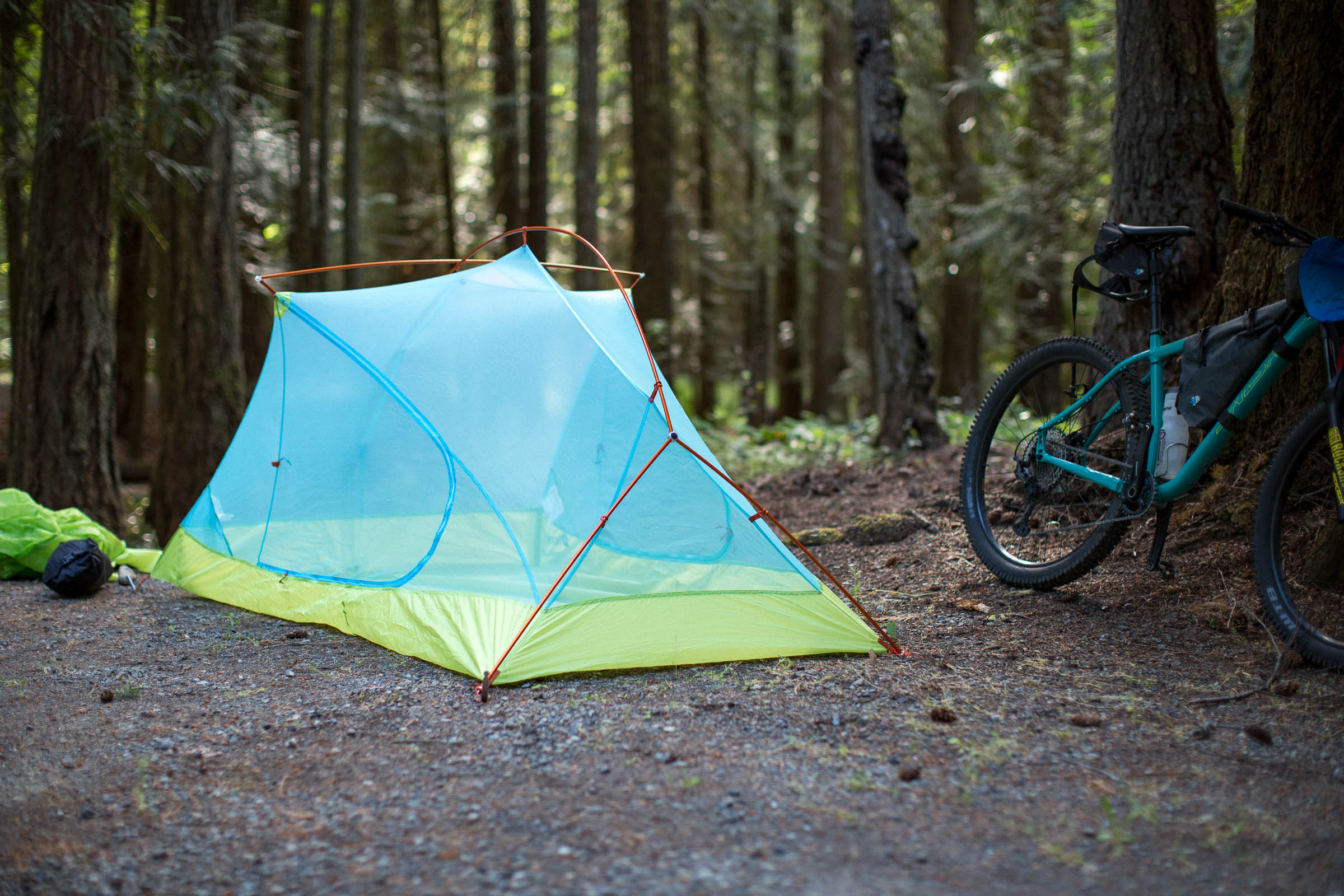MSR FreeLite 3-Person Tent Review
Share This
While on the hunt for a tent spacious enough to fit plush double sleeping pads, Miles and Emily turned to the MSR FreeLite earlier this summer and have been using it exclusively ever since. Dig into Miles’ MSR FreeLite 3-Person Tent Review after countless nights out between Idaho and the Pacific Northwest here…
Emily and I have been busy digging into the world of double sleeping pads this year. No more pad gaps, no more tiny tapered pads, and unlimited cuddling opportunities–life is good. That was until we started testing some seriously ginormous pads that were too wide for any tents we had on hand. A hilarious problem, if you ask me. So began my hunt for a spacious, lightweight tent that could handle the gigantic proportions of even the biggest double sleeping pads. In a world full of $1,000 Dyneema tents with waiting lists, I turned to the readily available, lightweight, and reasonably priced MSR FreeLite.
Beyond being wide enough to accommodate big sleeping pads, the MSR FreeLite series consists of one, two, and three-person tents that are all semi-freestanding, fairly spacious, and the lightest weight tents MSR offers. The two and three-person models both feature two doors with vestibules and all three have a micromesh tent body, raised bathtub style floor, waterproofed seams, and a tailored fly that sheds all unnecessary weight. MSR describes the FreeLite series as being ideal for ultralight summer backpacking, with maximum ventilation and more interior space. They weigh between 1.6 lbs (0.74kg) and 2.7 lbs (1.23 kg) depending on the size and configuration–the latter being the FreeLite 3-Person Tent Emily and I have been using for the last few months.

MSR FreeLite 3-Person Tent: At a Glance
Just like the rest of the FreeLite series, the FreeLite 3-Person Tent uses a single Y-shaped pole (plus a small horizontal strut pole), semi free-standing design, and a mostly mesh body alongside a removable and optional fly. It has a generous 43” (109 cm) of internal headroom, a length of 84” (213 cm), and a width of 66” (168 cm). There are two zippered doors on the sides, two vestibules, and pockets near each door as well as an overhead pocket.
The solid portion of the body, including the raised bathtub floor, is made from 15D ripstop nylon with MSR’s waterproof Durashield coating as well as a polyurethane and DWR water repellent finish. The FreeLite uses a lightweight 10D polyester micro-mesh for the majority of the body, which keeps the bugs at bay and encourages airflow inside when the fly is installed. The fly is made from the same ripstop nylon fabric as the body but with a silicone coating instead of a DWR finish because of its UV-resistant properties and soft/pliable feel. The main Y-shaped pole and short cross pole break down into a slender 18” (46 cm) package, which is one of the main negatives of tents not designed with bikepackers in mind. They don’t fit in any framebags or handlebar bags I have on hand, which meant I was lashing them to the outside of bags or racks while riding. Not ideal.

Due to its semi-freestanding design, the FreeLite 3-Person Tent can stand without stakes, but it’s best used with at least two at the foot-end, and a proper pitch with vestibules calls for two more additional stakes for each door. It doesn’t have a huge footprint considering its size and is easy to pitch in awkward spots due to its generally low-profile shape. The fly doesn’t connect to the foot-end of the main pole structure, so setting the tent up fly-first isn’t a standard option, but I’ve seen folks create a type of guyline groundsheet that holds the poles in shape to allow for both a fly-first and fly-only pitch.
FreeLite 3 Versus the Rest
After some digging, I discovered that the MSR FreeLite 3’s weight and size are at the top of its class when stacked against other comparable tents. By comparable I mean semi-freestanding, reasonably spacious, and in a similar price category. Most brands have some sort of three-person tent in this category, but the majority are either ultralight (and ultra-expensive) non-freestanding Dyneema shelters, heavy car camping tents, or burly four-season options that are overkill for most bikepacking trips. To offer a snapshot of where the MSR FreeLite stands, I put together a comparison chart showcasing the total weight, head height, and interior dimensions of some of the FreeLite’s closest competitors.
| Product | Complete Weight | Head Height | LxW | Price |
|---|---|---|---|---|
| MSR FreeLite 3 | 2 lbs 10 oz | 43″ | 84×66″ | $539 |
| Big Agnes Tiger Wall UL3 | 2 lbs 15 oz | 42″ | 88×66″ | $499 |
| Nemo Hornet Osmo 3-Person Tent | 3 lbs 5 oz | 44″ | 88×68″ | $549 |
| Marmot Superalloy 3-Person Tent | 3 lbs 5.6 oz | 43″ | 87×62″ | $489 |
As you can see, the FreeLite 3 is impressively lightweight compared to the others, with the Big Agnes Tiger Wall UL3 as its closest competition. It offers less interior space than most of the other three-person tents, but it’s not bad considering its weight and pack size–aside from the long poles.
Sleeping Thoughts
As mentioned earlier, we picked up the MSR FreeLite 3-Person Tent to accommodate big double sleeping pads, and for a spacious but reasonable lightweight shelter with plenty of room for two people, it has been wonderful. Coming from 2-person tents, having excess space inside my tent on rainy mornings or lazy afternoons feels like a luxury to me. Pair this space with a plush double sleeping pad, and I’ve had some of the best bikepacking sleeps ever. Despite its dimensions, it doesn’t actually feel that big with two people inside, and I’d argue that it’s best suited for two people with room to spare, rather than three. As most readers will know, tents are judged on what they can fit, not what they should fit. In this case, the MSR FreeLite 3-Person Tent can fit three 20″ wide Therm-a-Rest NeoAir XLite regular sleeping pads, leaving 6” of total unused width. Forget about cramming three wide sleeping pads inside, and the best case scenario would be two wide sleeping pads and one regular width pad.
Of course, I’m splitting hairs here, but it’s worth taking into consideration, depending on how you use your tent. I think the FreeLite 3 is best suited for two people on a weeklong (or longer) trip or shorter trips with three close friends, as splitting the fly, body, and poles between three people would really minimize the overall pack-size for each person.
One of the FreeLite’s greatest strengths is how well ventilated it is, which is especially important here in the Pacific Northwest. The fly is cut back in places to reduce weight and improve air circulation inside, both doors have dual zippers that can be used independently to increase or decrease ventilation, and the mesh body also helps to keep things fresh inside the tent. We used the tent in the rain, near-freezing temperatures here in coastal British Columbia, and in milder weather in Idaho this fall and never had any condensation issues.
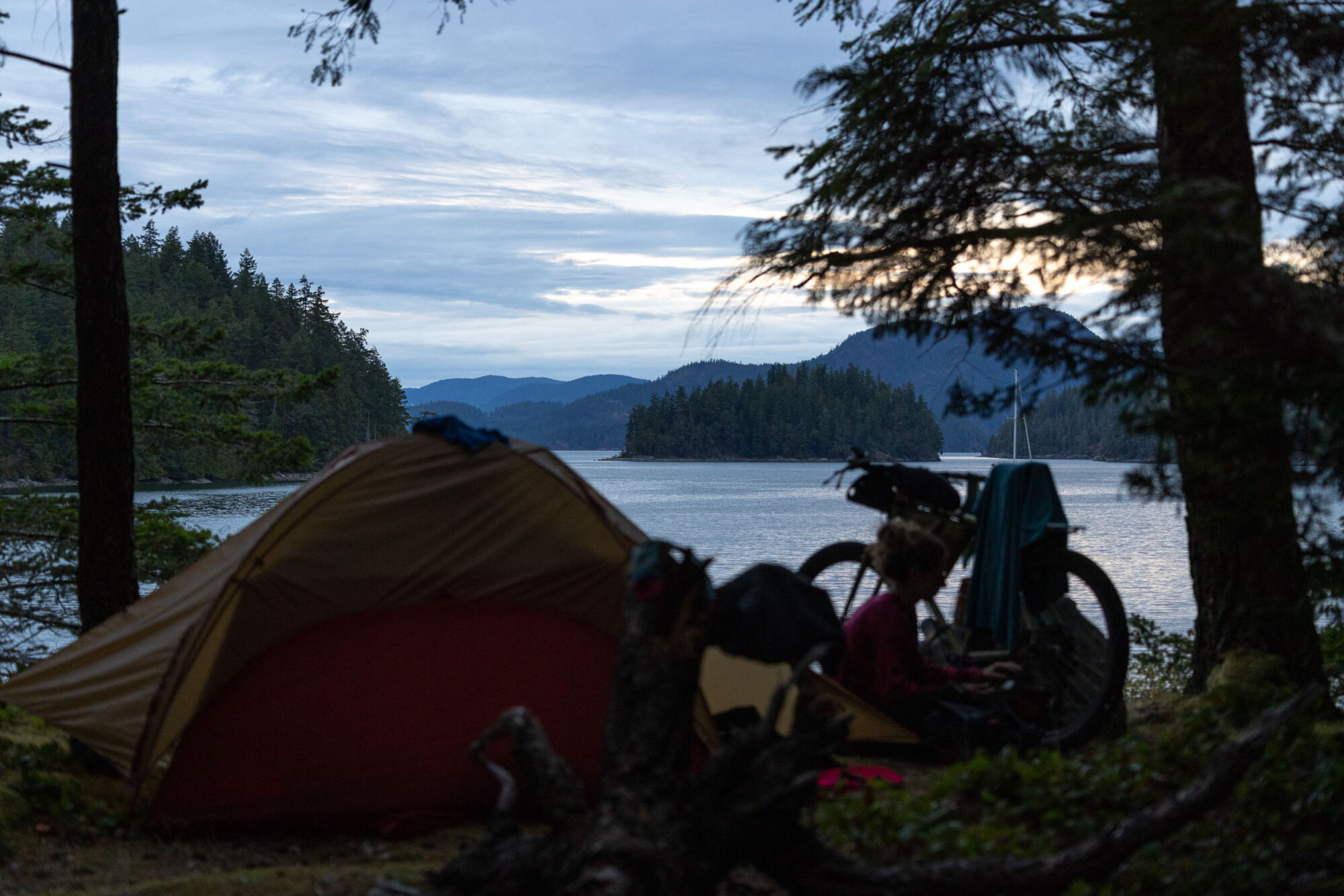
Set Up, Take Down, and Final Thoughts
There’s not a whole lot to say about how the FreeLite sets up other than that it’s a straightforward process. The Y-shaped main pole attaches to both corners at the head end, slotting neatly into metal points attached to short webbing straps and again in the center of the foot end. A small cross pole sits on top of the main pole, attaches to the main body, and lifts the center of the tent up to increase the amount of usable interior space. Ideally, two stakes hold the two foot end corners out, and then the fly attaches onto each corner with small webbing ladder lock buckles at one end to adjust the tension. Even with six stakes and a nice flat area to set the tent up, it took me a while to figure out how to get a taught pitch. I spent a lot of time messing around with the the various tensioners and guylines, but it turns out you really need to add an additional guyline to the foot-end of the tent to get it nice and snug. Thankfully, there is a small webbing loop at that end of the fly, and MSR includes several short lengths of extra webbing with aluminum tensioners already attached.
There are several additional guyline points for windy conditions as well as a number of velcro tabs on the inside of the fly to connect with the poles for even more stability. While we haven’t tested the tent in gale-force winds or major storms, it sits fairly low to the ground and doesn’t have any vertical walls to catch the wind. Plus, when it’s raining, there are integrated rain gutters to minimize the chance of water getting into the vestibule and tent. The two main door zippers also zip to a single point, which makes getting in and out of the tent less of a hassle as they remain tensioned and are easier to operate than a single curved zipper.
A major advantage of choosing nylon over Dyneema is that you can simply stuff the tent away when packing up, while Dyneema is best rolled carefully to prolong its life. With the body and fly split up and stuffed down into a handlebar or saddle bag, it disappears quickly. Aside from the long poles, it packs down impressively small considering its weight and price point. The storage bag it comes in makes for a packed size of 19” x 5” (48 x 13 cm), but removing the body and fly from the bag, stuffing them down, and stashing the poles and stakes separately makes for a much smaller package. As you can see below, the poles still dwarf my gigantic Buffalo Bags Big Buffalo handlebar bag, and I have yet to find a bag wide or long enough to accommodate them. As someone who enjoys nothing more than to #ResistTheDangle, this is frustrating.

Pros
- Lightweight and reasonably spacious for a three-person, semi-freestanding tent
- Readily available with lots of MSR dealers, both online and in-person
- Small pack size when separated into individual components
- Relatively small footprint size (without doors staked out) and easy to pitch with just a few stakes
- Can hold up in winds with additional guylines attached
Cons
- 18” poles are difficult to fit into bikepacking bags
- Not quite as roomy as comparable three-person tents
- On the pricier side, but not unreasonable
- More of a roomy two-person tent for longer trips
- Tricky to achieve a perfectly taught pitch and no fly-first option
- Capacity: Three-Person
- Material: 15D Nylon + MicroMesh
- Weight (as tested and packed): 2 lbs 10 oz (1.2 kg)
- Place of Manufacture: China
- Price: $539 USD at REI Backcountry
- Manufacturer’s Details: MSRGear.com
Wrap Up
In a perfect world, I’d only ever use freestanding tents. I prefer not messing around with stakes and using pythagorean theorem every night to get the tension and angles just right. Though I recognize there’s a time and place for everything, even Dyneema trekking pole tents, I prefer the simplicity of freestanding and semi-freestanding designs. This was a main reason for my interest in the MSR FreeLite 3-Person Tent. I’ve had positive experiences with their camping gear in the past, including the Carbon Reflex 1 that I reviewed on the Oregon Timber Trail a few years back, so I had high hopes.
While the FreeLite 3 might not be packed with all the clever features and details we’ve come to expect from cottage tent makers, it gets the job done. The weight and interior space, when used with another person, make it a comfortable and reliable option for three-season bikepacking, and there’s enough room to sneak a third friend in when necessary. It would be great to see a version with shorter pole segments, similar to what brands like Big Agnes and Nemo are doing with their bikepacking-specific tent models, as that’s pretty much been my only frustration with it so far.
Further Reading
Make sure to dig into these related articles for more info...
Please keep the conversation civil, constructive, and inclusive, or your comment will be removed.






